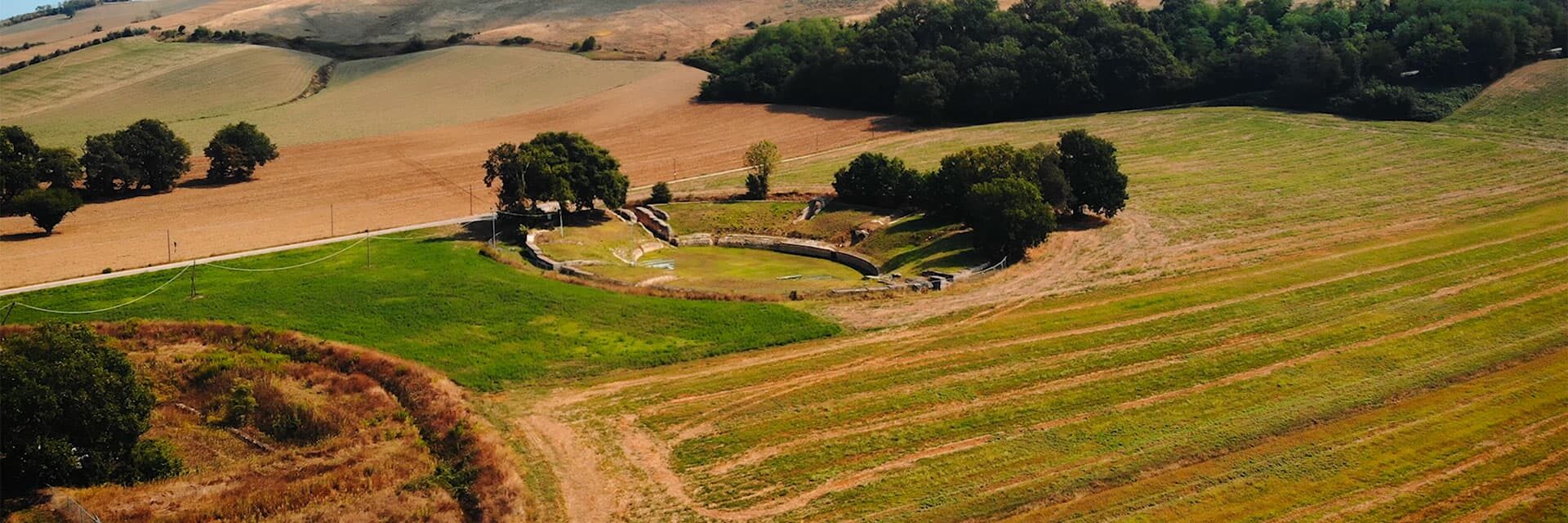
In the territory of the Castellone di Suasa Municipality, in the Pian Volpello area approximately 4 kilometers from the centre of Corinaldo, you can find the archeological park of the ancient city of Suasa. It is located midway up the valley of the Cesano river, on an ancient road that extends from the Adriatic Sea to the Apennine passes. Suasa dates back to the third century BC after the Romans conquered the area, which was previously occupied by the Gallic Senones. The oldest origins of its existence are unknown.
...Archeological research began by the University of Bologna in 1987 and still ongoing, has not yet been able to reveal the roots of the city. It is believed to have been a modest grouping of buildings, perhaps a magistrate’s headquarters for administering justice, which then underwent urban and architectural development over the course of the second century BC: recent discoveries have attested the presence of houses decorated in the style of local aristocratic villas from the cities of Lazio and Campania dating back to the same era. The city must have undergone consistent urban development around the mid first century BC; this period includes the oldest phase of the great dwelling of a senatorial family, the Coiedii, which grew to their apex in the early second century AD under the reigns of emperors Trajan and Hadrian. This domus, which extends over three thousand square metres, includes a large garden with fountains, porticos, and approximately twenty mosaic floors, some of which are of high quality and impressive, as well as painted walls that decorated the representational rooms. Over the course of the first century AD, in all probability the amphitheatre was also built not very far away from the Coiedii home, and is one of the largest in the region. A theatre has also been located between the amphitheatre and the domus, which will be brought to light in the near future. The public buildings are for the most part unknown, with the exception of a vast complex with rectangular rooms and porticos facing a central uncovered courtyard on the main street of the city, which runs almost directly beneath the current provincial highway. This was a marketplace believed to have been the largest in the Marche region. South and north, on the sides of the roads entering and exiting the city, there were two necropoles: the remains of funeral monuments in stone from the imperial period have been found, completely ravaged over the course of time, as well as numerous buried tombs inside of brick or tile caskets, which date back to the end of the second century AD. At diverse times and for diverse occasions, numerous sculptures have been uncovered in the area of the ancient city, many of which have been lost over the years. A splendid marble head of Augustus was recently found, part of a statue of the emperor erected by the people of Suasa in a public area or building of the city. In the nearby Castellone di Suasa centre, the palace that once was the residence of the Duchess Livia Della Rovere hosts the “Alvaro Casagrande Archeological Museum” where, in addition to the objects recovered during excavations, you can also see the splendid wall frescos recovered from the Coeidii villa. These frescos are a refined and rare example of Pompei style painting in the entire area of central and northern Italy.